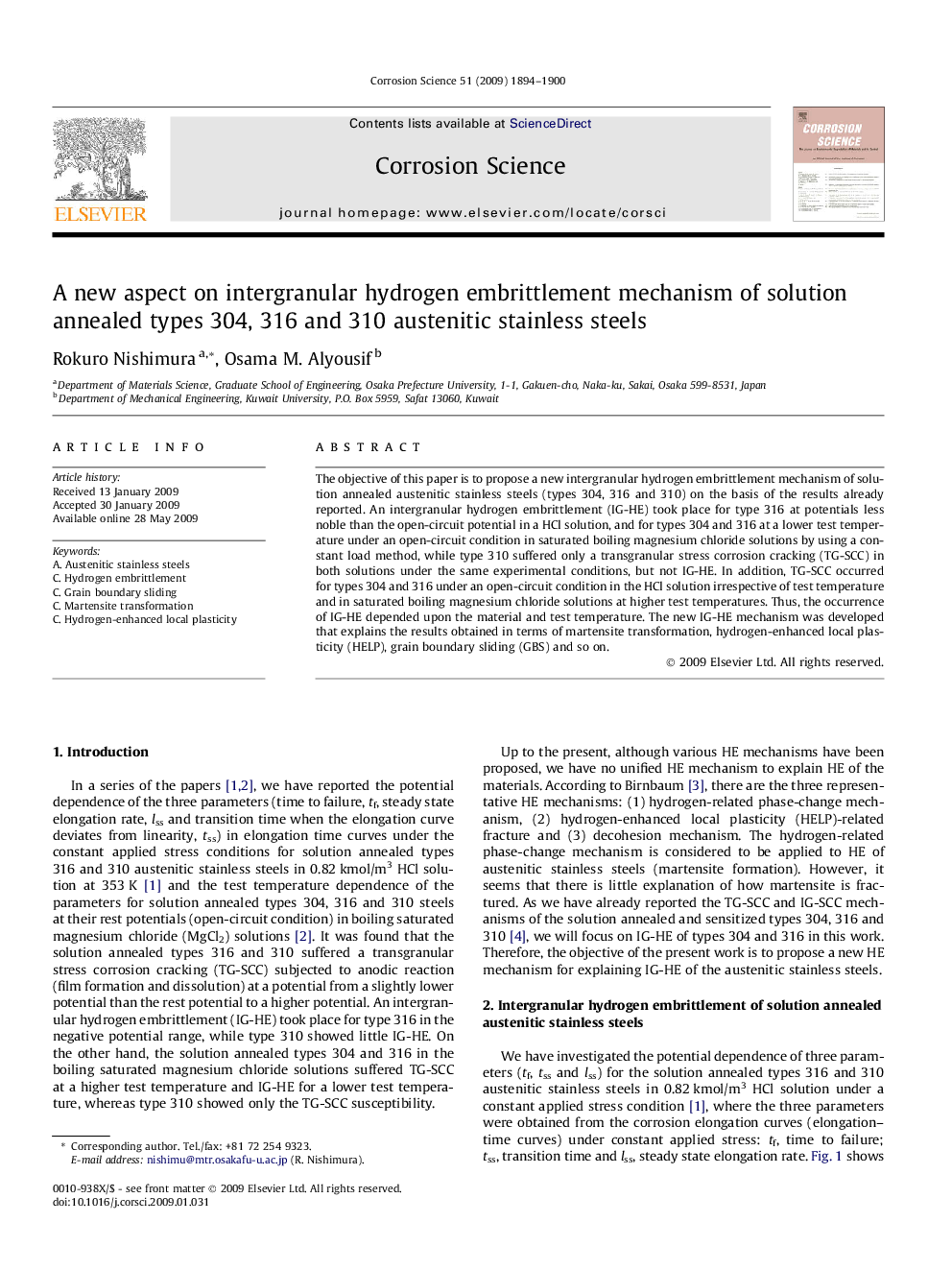| کد مقاله | کد نشریه | سال انتشار | مقاله انگلیسی | نسخه تمام متن |
|---|---|---|---|---|
| 1470892 | 990337 | 2009 | 7 صفحه PDF | دانلود رایگان |

The objective of this paper is to propose a new intergranular hydrogen embrittlement mechanism of solution annealed austenitic stainless steels (types 304, 316 and 310) on the basis of the results already reported. An intergranular hydrogen embrittlement (IG-HE) took place for type 316 at potentials less noble than the open-circuit potential in a HCl solution, and for types 304 and 316 at a lower test temperature under an open-circuit condition in saturated boiling magnesium chloride solutions by using a constant load method, while type 310 suffered only a transgranular stress corrosion cracking (TG-SCC) in both solutions under the same experimental conditions, but not IG-HE. In addition, TG-SCC occurred for types 304 and 316 under an open-circuit condition in the HCl solution irrespective of test temperature and in saturated boiling magnesium chloride solutions at higher test temperatures. Thus, the occurrence of IG-HE depended upon the material and test temperature. The new IG-HE mechanism was developed that explains the results obtained in terms of martensite transformation, hydrogen-enhanced local plasticity (HELP), grain boundary sliding (GBS) and so on.
Journal: Corrosion Science - Volume 51, Issue 9, September 2009, Pages 1894–1900